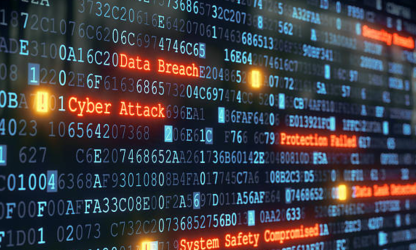Protect your company’s assets in a world that’s increasingly dominated by mobile technology and IoT
According to Computer World, there will be more than 25 billion connected online devices by 2020. IBM states that roughly 785 Cloud apps are in use for the average Enterprise while only 60 of those are actually used on a consistent basis. What does this all mean?
Both known and unknown access to data and the inherent risks associated will only increase. As the saying goes, “With great power, comes great responsibility.” That responsibility…to secure and safeguard data and access to that data, is in the watchful hands of corporate IT.
If you’ve been reading about technology in the news recently, it is clearly dominated by mobile tech, analytics, and the Internet of Things (IoT). When new technology like IoT appears on the marketplace, manufacturers and service providers rush to bring products to market, often without due consideration for security. Inevitably, bad actors including low-level hackers, organized criminals, and hacktivists exploit the resulting vulnerabilities by stealing or compromising data, denying access to services or causing other kinds of cyber-mayhem.
Below are a few helpful tips for companies looking to develop a solid cybersecurity strategy related to IoT and mobile:
- CASB (Cloud Access Security Brokers) – CASB is a relatively new term originated from Gartner just a few years ago. Although relatively new, the core framework on how a CASB is built can be extremely helpful in giving your business full transparency into how sanctioned or for that matter, unsanctioned apps, are being used. CASB acts as a secure ‘Gatekeeper,’ providing an organization full access to the Who, What, Where, and with Whom data is being used between Cloud Providers (IaaS, Saas, PaaS) and the mobile users themselves who are accessing that data.
- Mobile needs to be a central component of IT – for the past decade and a half, mobile devices were bolted onto a company’s IT strategy because the devices themselves were what professionals used when they were traveling or between times when they were sitting at a computer. Today, there’s a lot more you can do on mobile so usage continues to skyrocket. As a result, every company needs to treat mobile like a central component of its IT, data, and corporate-wide cybersecurity policies, along with Internet use pertaining to MDM (Mobile Device Management) and perimeter protocols.
- IoT complexity brings high cyber-risk to organizations – in the same way mobile devices changed the game for IT security over the past two decades, the Internet of Things is changing it again. IoT is connecting a greater diversity of devices to the corporate network, and with that brings much greater complexity and risk. And the scale is incredible. There are now over 3 billion smartphones in use in the world. There are already 8 billion IoT devices and we’re still at the very beginning of the growth curve. That number will climb past 25 billion by 2020.
- Cybersecurity is now a public safety concern – when mobile security became an issue, the biggest concerns were data leakage and loss of productivity and profitability. As IoT connects more parts of the world to the internet, it creates a greater attack surface for rogue players. That means public infrastructure like stoplights, bridges, water facilities, and power plants can now be attacked. Vulnerable endpoints on your organization’s network could be compromised to launch the attack. In other words, the stakes of the game in cybersecurity are higher than they’ve ever been, and they will only get bigger in the years immediately ahead.
Make sure your company is prepared for these changes. Although there are even more solutions offered daily, to help protect mobility and data, as the services available to us increase, so do the capabilities of cyber thieves around the world. A risk assessment can help identify any gaps in your infrastructure as well as potential impacts to your business. Use this data to develop a solid strategy that’s right for your particular business continuity needs.
Find out more about cybersecurity risk assessments in this helpful data sheet. To schedule a risk assessment with one of our security experts, contact us here.




